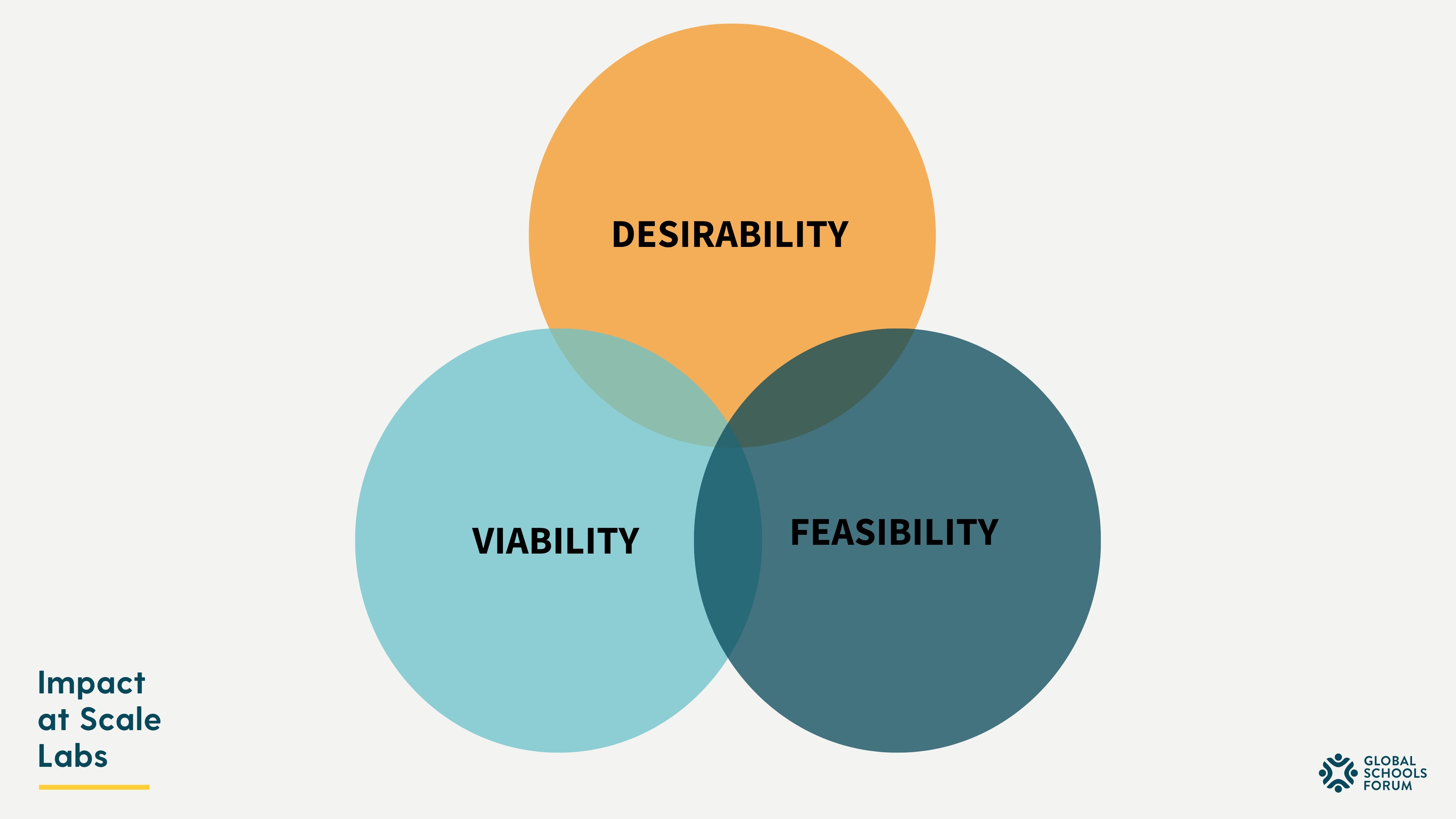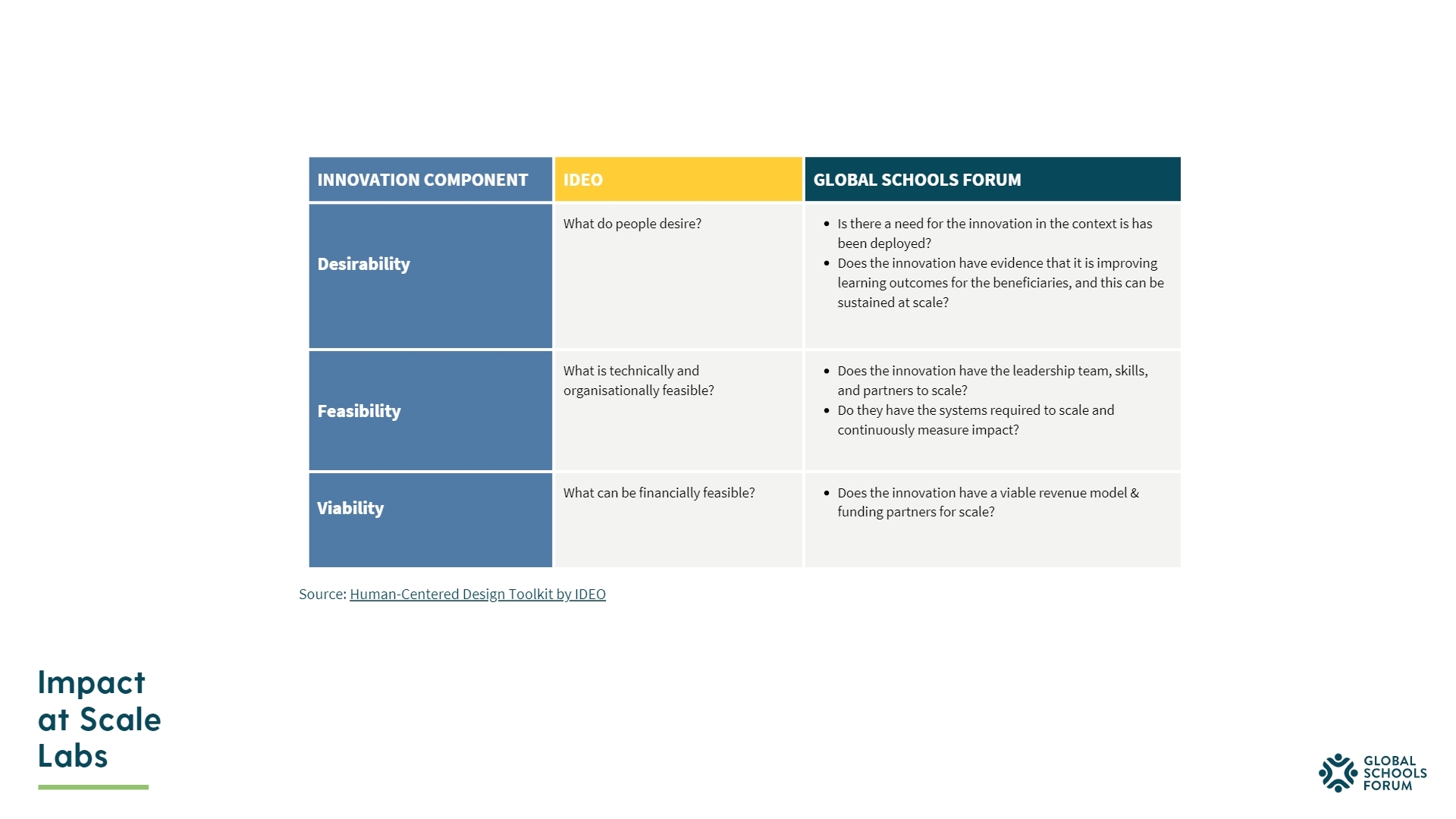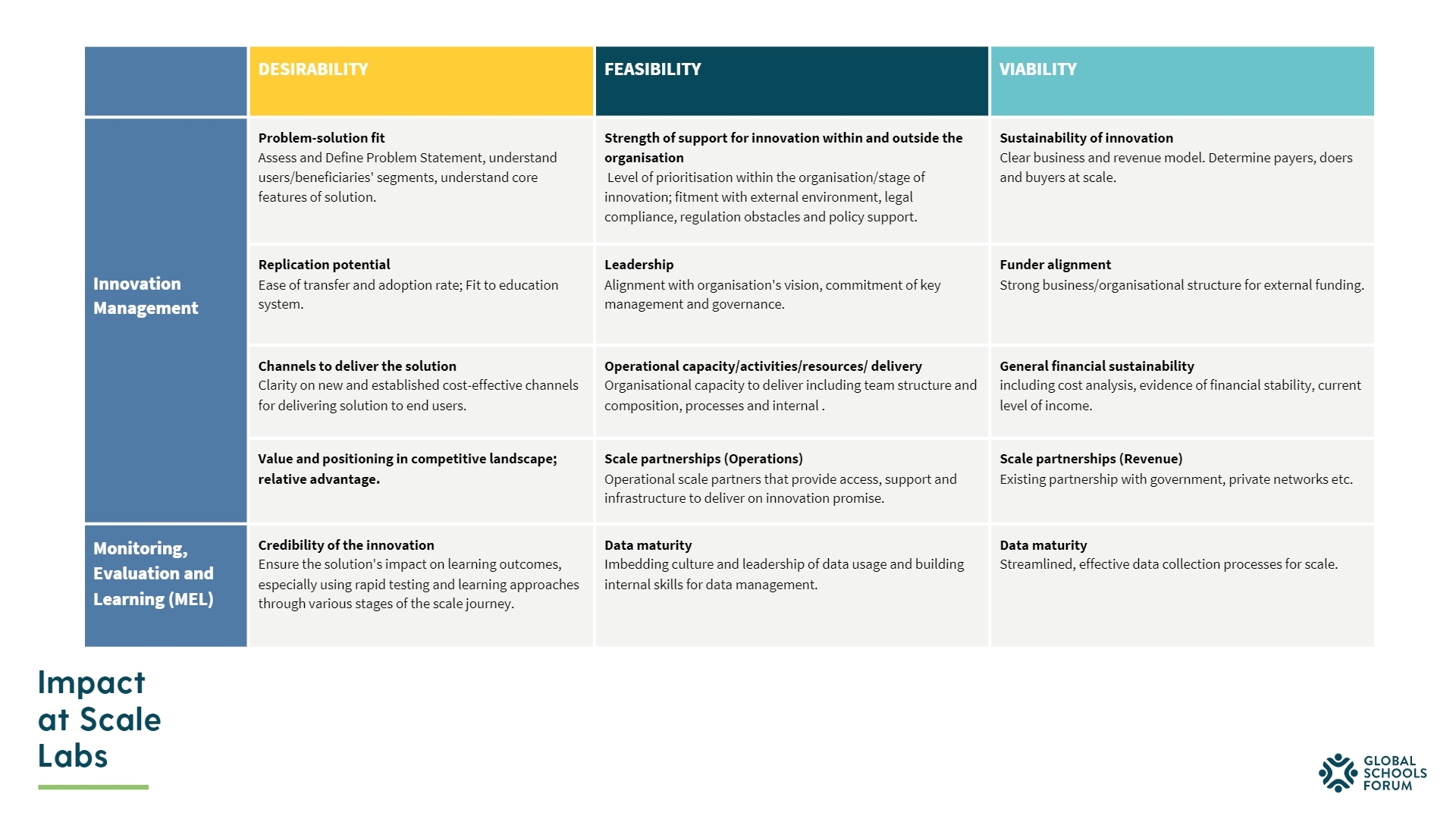Scaling promising innovations as a strategy to drive systems change and to deliver on the UN's Sustainable Development Goal 4 (SDG4) are often championed by education leaders. Organisations such as The Brookings Institution and VVOB are at the forefront of demystifying what scale might mean for the education space. However, selecting and supporting education innovations to scale is no easy task.
As a part of the Impact at Scale Labs, GSF is supporting organisations to design and scale solutions to improve learning outcomes for children in low-income communities. To guide our thinking, we have adopted and adapted the DVF framework, a widely known framework in the social innovation space. The DVF framework has specifically been used to select, support, and create tools that enable our participating organisations to scale their innovation. .
Introduction to the DVF Framework
IDEO proposed that successful and scalable innovations sit at the centre of these three criteria:
Desirability – is there a problem, does our product solve the problem, is the product experience great?
Viability – does the product bring much more revenue than it costs to deliver it?
Feasibility - can the product be built and delivered to its target audience?

IDEO’s original DVF framework.
We like the framework for two main reasons, 1) it outlines 3 generic buckets that are relevant to different organisations across sectors, 2) it gives a simple overview of the fundamental components of innovation success. Therefore, it’s value for the education innovation community, wishing to scale their innovations is high.
However, we have identified two fundamental needs within the education community, and these have largely informed our adaptations:
- Learning outcomes – when thinking through each of the DVF components, the crux is impact on learning outcomes and at each stage prioritising/considering impact before other elements. Therefore in the adapted version, we have aimed to be more specific about prioritising and/or considering the learning outcome lens.
- Differentiated revenue streams – funding partners are an integral part to any social organisations revenue model. Therefore, we have aimed to be more specific about this component in our adapted version.
The table below outlines how our general thinking around each core innovation component has developed based on the needs highlighted above.

In addition, we felt that the three main components could be broken down further into specific indicators. These indicators are well known and have been derived from studying various education innovations and their pathways to scale in the LMIC context and aligning it with research on scaling education innovation in LMIC contexts.
The indicators largely sit under 2 main buckets: innovation management and monitoring, evaluation, and learning. This has been represented in the table below.

This blog is part of a 3 part series on the DVF and forms an introduction. In the next 2 blogs, we shall be taking a deeper dive into the DVF components and understanding their indicators in a bit more detail.
How we are using the framework in the Impact at Scale Labs programme
The framework has guided our thinking on the development of the Impact at Scale Labs programme. It has been used to:
- Support the selection of innovations for the Lab – the DVF inspired a 2-step process, where using the indicators we were able to effectively evaluate innovations and assess their scale potential.
- Monitor progress – using the adapted version of the DVF, we have developed a simple diagnostic tool that is filled in by organisations on a regular basis. This helps us assess their progress and deep dive into strengths, weaknesses, opportunities, and challenges (through the DVF lens), and then decide on next steps.
- Design & determine support for Lab participating organisations – through a combination of workshops, coaching, networking & consultants we have designed individualised support systems to help organisations progress and build robust/scalable innovations in their new chosen context.
Our adaptation of the DVF framework is still a work in progress. Global Schools Forum alongside Schools2030 and HundrED recently secured a grant from the Jacobs Foundation SALEX Catalytic Fund. The grant will enable us to take the framework to the next level and build a more standardised, holistic and user-friendly framework.
Our first cohort of participant organisations on the Impact at Scale Labs programme are already seeing early gains in the adaption of the DVF framework:
Deborah Kimathi, Chief Executive Officer, Dignitas said: "In many ways, I feel like the DVF framework is the golden indicator of the Labs! If we can tick all the desirability, feasibility and viability ‘boxes’, we can indeed ensure our innovation is impactful at scale. The Impact at Scale Labs journey is really a journey towards ticking those boxes. Each exercise, each engagement, each coaching session is essentially another step towards understanding our desirability, feasibility and viability, identifying the gaps therein, and designing solutions to help address those gaps."
We are excited to be supporting Dignitas, Gyan Shala and Sabre Education on their journey to scale as part of this programme. GSF's adaptation of the DVF scaling framework is integral to this process, and we look forward to further work with our participant organisations to achieve scale for their education solutions. Blog 2 and 3 on the DVF framework, and how we're supporting organisations to scale coming soon.
The Lab’s DVF framework has been very helpful in providing structure and planning for Sabre as we develop our work with low-fee private schools (LFPS) in Ghana. The DVF framework gives us a pathway to understand the market and viability in terms of low-fee private schools.

